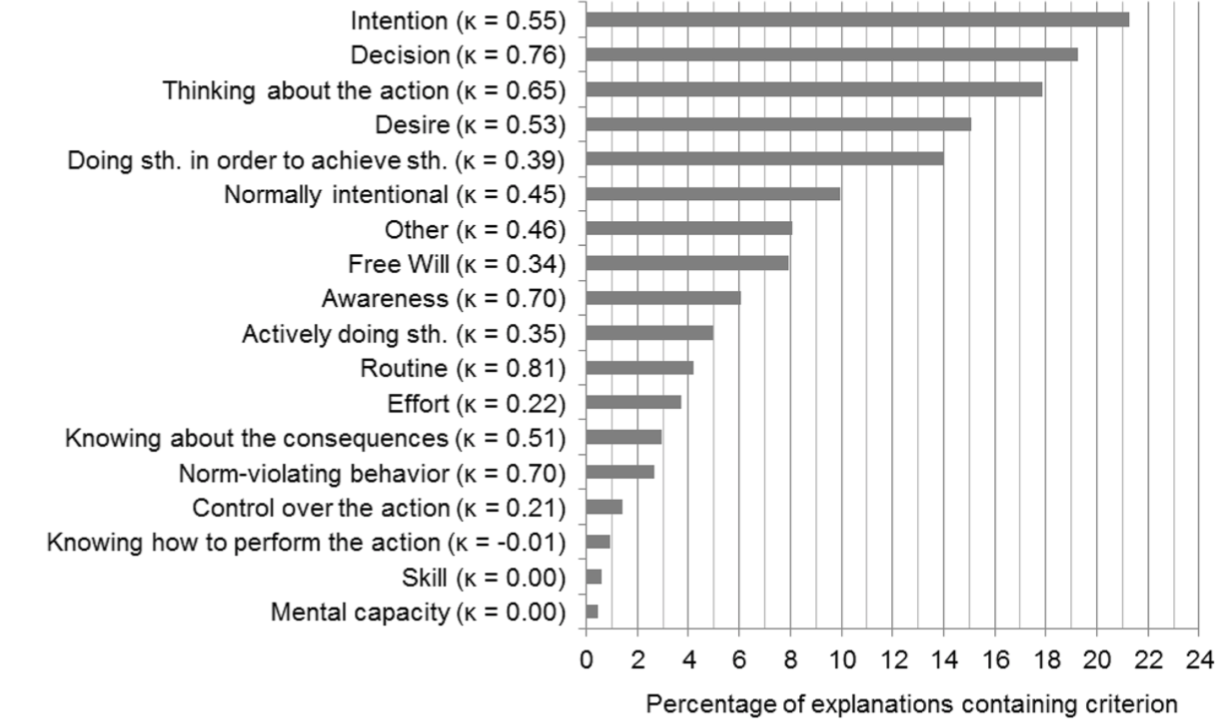Investigating conceptions of intentional action by analyzing participant generated scenarios

Abstract
We describe and report on results of employing a new method for analyzing lay conceptions of intentional and unintentional action. Instead of asking people for their conceptual intuitions with regard to construed scenarios, we asked our participants to come up with their own scenarios and to explain why these are examples of intentional or unintentional actions. By way of content analysis, we extracted contexts and components that people associated with these action types. Our participants associated unintentional actions predominantly with bad outcomes for all persons involved and linked intentional actions more strongly to positive outcomes, especially concerning the agent. People’s conceptions of intentional action seem to involve more aspects than commonly assumed in philosophical models of intentional action that solely stress the importance of intentions, desires, and beliefs. The additional aspects include decisions and thoughts about the action. In addition, we found that the criteria that participants generated for unintentional actions are not a mere inversion of those used in explanations for intentional actions. Associations between involuntariness and unintentional action seem to be stronger than associations between aspects of voluntariness and intentional action.